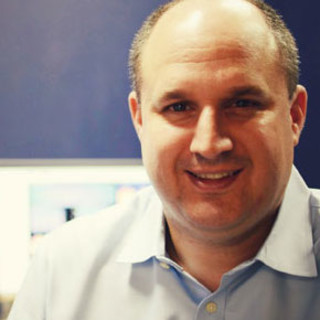
Residents have long fought a battle between getting an education versus performing service obligations (some like to call it scut!). But, the battle lines constantly shift. And, each time the changes enacted greatly affect residency well-being, finances, and education. Today, if I had to give you a feel for the zeitgeist, we have swung a bit more toward the education side. Sounds good in theory; however, we lose sometimes when we swing too far in either direction. To that end, I will talk about an example of some of the more controversial education versus service cycles that radiology residency programs have experienced since I had started my radiology residency back in 1999.
Duty Hours
If you had to pick one battle, night float probably would be the biggest. Prior to the advent of regulations, interns, and residents, in general, would regularly work greater than 80 hour weeks. Radiology residents rarely worked to this extreme level. But, on occasion, it would happen. Perhaps, you took an interventional call on several nights and had to come in. Or maybe, you were working during a mass casualty situation. Bottom line. You were expected to complete your shift no matter what the hours.
Libby Zion
Then, all things changed. Many of you have heard of the Libby Zion case. Essentially, she presumably died from the consequences of inappropriate medication administration. The parents and then the courts deemed that her outcome was related to an overworked resident. Subsequently, New York State enacted a law preventing residents from working more than 80 hours per week or greater than 24 hours shifts. Following this legislation, many other states followed their lead. And, then the ACGME followed suit and created by-laws that programs needed to follow in order to maintain accreditation. In addition, the ACGME added other rules such as needing one day off per week and more.
So, what happened next? Night float systems (residency service) became much less flexible in order to meet the demands of the new regulations. These rules upended the old ways of meeting residency service obligations. Many residents (myself included) did not like the new regulations because it prevented residents from completing their night float rotations in one fell swoop. Others felt better about the changes because the rules affected these residents by limiting their shift work.
A New Reversal?
But the story did not end here. The landscape continued to change due to new research and new laws. One recent study showed that pediatric residents burned out more when they worked only 12 versus 30-hour shifts. And most recently in 2017, a requirement mandating that first-year residents could not work more than 16 hours at a time had been changed. Now, these same first-year residents can work for 24 hours straight. Duty hours has become a moving target. Where it shall land next, nobody knows…
IRS- Are Residents Students Or Employees?
For years, the government paid residents as if they were students, giving them an annual stipend. No one really thought much about it. The government considered all educational and service activities as employment activity in order that they could collect FICA taxes. However, one day this all changed. Back in the 1990s, multiple litigants claimed that residents should not have to pay FICA taxes since residents are students and not employees. After a lot of back and forth, the courts determined that some residents are students on a case by case basis. Therefore, these “resident students” would be able to claim refunds on their FICA taxes. Many of us received large checks in the years afterward with interest from the refunded FICA taxes.
But, once again, all this changed. Once again 2011, the IRS created a new stipulation that residents are no longer to be considered students. Rather, the government classified residents as employees. As such, residents earn a salary and not a stipend. More importantly, residents are required to pay FICA taxes on their income. So, no longer can you reap the benefits of being a student! In this case, the resident as a service provider won the day as the pendulum swung again. Unfortunately, all this came at a time when the debt load of residents has increased substantially. As always, those that need the extra money the most don’t reap the benefits!
The New Accreditation System And The Milestones:
On the surface, it doesn’t seem like the new ACGME accreditation system has much to do with a conflict between service and educational obligations. But, let’s dig deeper. For years, it turns out that prior to the new accreditation system, the ACGME required radiology residency programs to set up their own evaluation systems. Initially, radiology residency programs had free reign to do what they wanted when it came to evaluations. But, how did the ACGME know if the program actually educated their residents instead of using them as scut monkeys?
To answer that question, in their infinite wisdom, the ACGME mandated that evaluations needed to be based on the language of the competencies, a specific categorization of educational goals (i.e medical knowledge, practice improvement, professionalism, etc.). So, programs began the placing the language of the competencies in their evaluations. But, this change did not significantly transform the behavior of residency programs. Merely, it changed the way we processed paperwork.
So, the ACGME even went further. In the most recent years, they decided to force residencies to begin a whole new evaluation system entirely. Instead of just global assessments based on the language of the competencies, now programs would have to assess residents upon specific skills in order to measure education progression. Theoretically, this would make residencies to increase education and decrease unevaluated service obligations. The ACGME called this new evaluation system the milestones. But, again did that really change the behavior of residency programs when it came to meeting their educational obligations? In my opinion, probably not. Instead, paperwork again increased without a significant change.
So What’s Next For The Current Evaluation System?
Again, the pendulum may have ineffectually swung too far toward the educational side in the realm of residency evaluations. Now there are more requirements without significant residency behavioral changes. So, I would not be surprised if they decided to relinquish this system and try something new entirely! However, the ACGME has not changed the system just yet.
Summing It All Up- Education Vs. Service
The conflict between educational and service obligations has manifested itself in many ways. Of the some of the more controversial issues I have talked about above, it has made a significant impact on resident’s lifestyle, finances, and education. But this war still rages. I only expect additional changes to radiology residencies as they continue to strive to strike the correct balance. It’s not easy!
Barry Julius, MD, is a board-certified radiologist at St. Barnabas Medical Center. He is a 2018–19 Doximity Author. He is the developer of the educational website called radsresident.com.







